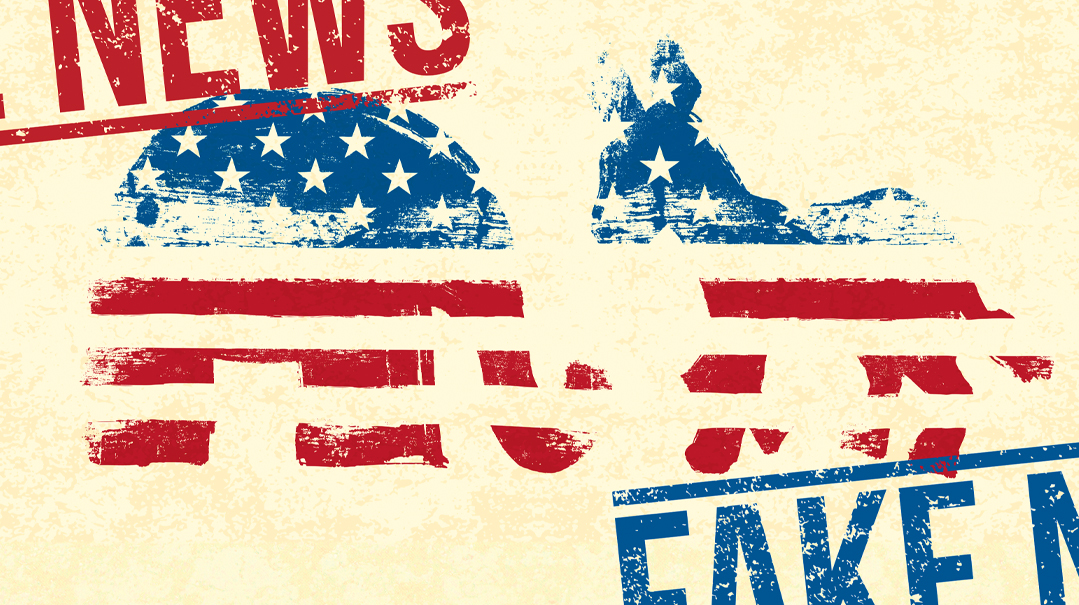The Real Deal for 2024

Truth in advertising takes on new meaning

H
aving started my journalism career nearly 50 years ago, when reporters recorded interviews on cassette tapes, I sometimes reminisce over the advertising slogan: “Is it live, or is it Memorex?"
In the world according to Madison Avenue, the quality of Memorex was so high that you couldn’t tell the difference between a live performance and one recorded on their cassettes.
With GroupM, a leading global advertising agency, predicting the US political market will spend up to $17 billion on advertising in the 2024 elections, voters need tools to discern the difference between an ad featuring a real candidate and a deep fake created by an opponent, or even by a nefarious foreign interest seeking to subvert the election.
A Federal Election Commission (FEC) regulation forbids candidates for federal office or an employee or agent who represents them from fraudulently misrepresenting other candidates or political parties. However, as of press time, the FEC is still mulling whether to apply this regulation to deceptive campaign ads that use artificial intelligence (AI) to smear an opponent.
Pending an FEC ruling, leading Silicon Valley advertising platforms have jumped the regulatory gun and issued their own guidelines.
Starting with the new calendar year, Meta — the parent company of Facebook and Instagram — requires advertisers to disclose whenever political ads contain video or audio that has been altered to depict real people saying or doing things they didn’t say or do; that depict realistic-looking events that didn’t happen; or that have doctored sound or pictures from events that did occur.
Since November, Google has compelled political advertisers to “prominently disclose” if an election ad features “synthetic content.” Microsoft expects political advertisers to embed digital watermarks in their ads that prevent anyone else from altering them.
Much of the impetus for these new policies follows a Republican National Committee (RNC) shock ad from last April showing fake but realistic photos of cities with boarded-up downtown areas, military units on the street, and throngs of immigrants wreaking havoc, all foreshadowing a bleak future if President Biden and Vice President Harris are re-elected. Last June, the DeSantis campaign featured a fake AI-generated image of Donald Trump hugging Anthony Fauci. Needless to say, neither man wore a mask.
Fake ads masquerading as real ones have become a major campaign dirty trick. The RNC did disclose that it used AI in its attack ad on Biden-Harris. But when the goal is to convey a traumatic or unforgettable image, it hardly matters whether real footage or even cartoon characters are used.
A High Stakes Game
Advertisers don’t need to resort to AI to get their point across.
One of the most famous campaign ads in history is known as the “Daisy” ad of 1964.
President Lyndon Johnson, who had assumed office a year earlier after John F. Kennedy was assassinated, was seeking a mandate from voters for a full term. His opponent was Arizona Republican senator Barry Goldwater. The campaign took place less than two years after the October 1962 Cuban Missile Crisis, which was as close as the US and Soviet Union ever came to a nuclear war of mutually assured destruction.
The Daisy ad featured a three-year-old girl in a field, miscounting from one to ten as she picked leaves off of a daisy. After she plucked the final leaf, the camera zoomed in on the freckle-faced blonde girl as a man’s voice in the background started a launch countdown.
When he hit zero, the mushroom cloud of an exploding atomic bomb filled the screen. “Vote for President Johnson on November 3,” the voice intoned. “The stakes are too high for you to stay home.”
The ad intended to paint Goldwater as an extremist who would launch a nuclear war if given a chance. It was an exaggeration, but Goldwater seemed to embrace the extremist tag during his acceptance speech at his party’s nominating convention when he said: “Extremism in defense of liberty is no vice, and moderation in pursuit of justice is no virtue.”
Goldwater was never a strong candidate, and on November 3, Johnson won in a landslide with 61% of the popular vote, carrying 44 states to Goldwater’s six and winning 486 electoral votes to Goldwater’s 52.
Avoid Getting Faked Out
Johnson, a cutthroat Texas politician, wasn’t the only Democrat to play dirty political pool.
In 2016, Hillary Clinton found the girl who played “Daisy” and recruited her for a campaign commercial against Donald Trump. Daisy, whose real name is Monique Corzilius Luiz, told viewers she had the same fears of nuclear war now as she had back then, which strains the imagination, considering she was three when the Goldwater commercial was filmed. She reportedly had never seen the Daisy ad until she found it on a search engine when she was in her forties.
Campaign advertising is shifting into high gear now that the delegate count is about to begin. The Iowa Republican caucus is scheduled for Monday, January 15, and the New Hampshire primaries for both parties eight days later.
There is still professional disagreement over the impact of political advertising on voting decisions.
Yale political science professor Alexander Coppock published a study in 2020 in the journal Science Advances in which he contended that political advertising has a minimal impact on voter preferences overall, and only becomes a factor in races decided by less than one percent.
However, Alexa Raad, a cybersecurity expert at the Canadian-based Centre for International Governance Innovation, published research in August 2023 that “political advertising on social media has had a pivotal impact on democracy since the 2016 US presidential elections, through an amplified reach and the sowing of disinformation and division.”
Drawing on the elegant term “surveillance capitalism,” coined by US psychologist Shoshana Zuboff, Raad observed that political advertising is a cash cow for social media companies.
The profit motive overrules every other consideration, including the truth.
The lesson to take home is that if you have already made up your mind about whom you’re voting for, it’s unlikely that ads will influence you. If you’re still on the fence, do your best to get your information directly from the candidates’ mouths, rather than from their proxies or their highly paid and sometimes devious and immoral advertising agents.
(Originally featured in Mishpacha, Issue 993)
Oops! We could not locate your form.







